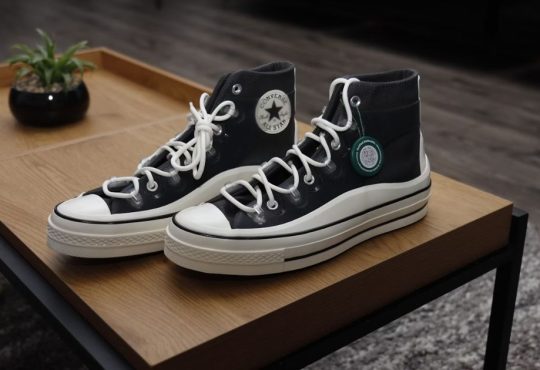
In 2024, the realm of shopping offers consumers unparalleled options. From a vast array of products to diverse retail models, the spectrum of choices caters to every preference, pushing consumers to refine their criteria and expect personalized experiences at every turn. This article delves into the best retail trends guide, learning the five new ways of transforming shopping.
Best Retail Trends Guide: 5 New Ways to Transform Shopping!
Consumers now seek “the best” products, prioritize affordability without sacrificing quality, advocate for sustainability and ethical practices, and place immense trust in the brands they support. Their demands and perspectives evolve as they adapt to inflation, economic fluctuations, and environmental concerns.
To sustain a competitive advantage in this continuously evolving environment, retailers must wholeheartedly embrace innovation and explore novel avenues to meet consumer needs. From AI-driven digital pricing systems to hybrid shopping experiences, sustainable options, and highly tailored services, let’s delve into the retail trends reshaping the future of both online and in-person shopping.
Embracing AI for Unparalleled Personalized Shopping Experiences
Artificial Intelligence (AI) is not merely a passing trend but a transformative force reshaping the retail landscape at its core. Its integration into retail advertising marks a significant shift, offering a level of personalization and real-time capabilities previously unseen. What distinguishes AI from conventional methods is its ability to swiftly analyze vast consumer data and provide tailored experiences to each shopper.
The process begins with comprehensive data collection, facilitated by various means such as loyalty card scans and advanced sensor technologies installed in-store. These sensors meticulously track customer behavior, capturing nuances like browsing patterns, product interactions, and purchase decisions. This wealth of data is fed into AI algorithms, seamlessly integrating information from online platforms, social media channels, and other marketing touchpoints.
Through sophisticated analysis, AI predicts consumer preferences and behaviors, enabling retailers to deliver hyper-personalized promotions and product recommendations.
Furthermore, AI operates within a continuous feedback loop, where customer responses to personalized suggestions generate additional data, further refining the system’s predictive capabilities. Over time, this iterative process leads to increasingly accurate and nuanced insights into consumer behavior.
Despite its immense potential, the widespread adoption of AI in personalized shopping experiences is expected to unfold gradually. While retail giants are at the forefront of implementing AI-powered technologies across their operations, smaller businesses are adopting them in phased approaches to manage implementation costs effectively.
As the retail landscape evolves, solutions like Engage, part of VusionGroup’s Retail Marketing suite, emerge as indispensable tools for retailers of all sizes. Designed to grow alongside businesses, Engage empowers retailers to create dynamic shopping environments that continually exceed consumer expectations, ensuring sustained growth and success in an ever-changing market.

Evolving towards Seamless Omnichannel Retail Experiences
Just as AI technology streamlines customer interactions through interconnected digital platforms, omnichannel retailing focuses on integrating multiple touchpoints to deliver cohesive experiences across channels. Unlike traditional cross-channel approaches, which require customers to navigate disparate sales channels independently, omnichannel strategies elevate the shopping experience by unifying various channels into a cohesive whole.
Consider a practical scenario exemplifying this trend: a customer orders a new pair of shoes from an e-commerce website. Upon confirmation, they are presented with various delivery options: same-day home delivery, alternative addresses, 2-day shipping, or convenient pick-up choices (curb-side or in-store). With omnichannel retailing, stores benefit from synchronized inventory management, ensuring product availability aligns seamlessly with the customer’s preferences.
Moreover, the purchase contributes to the customer’s loyalty program, earning them rewards and discounts redeemable both online and in-store. As they visit the physical store to collect their order, they can effortlessly use their accumulated points for additional purchases. All transactions are consolidated within the retailer’s app, offering a unified platform for managing purchases, updating personal information, checking rewards balances, and accessing exclusive promotions.
Satellite retail trends such as self-service platforms, interactive retail media, flexible social commerce architectures, and personalized marketing tactics are pivotal in enabling omnichannel strategies. These interconnected initiatives elevate the customer experience by facilitating seamless channel transitions and fostering stronger connections between shoppers and brands.
Embracing Sustainable and Ethical Retail Practices
As consumer awareness of their purchases’ ethical and environmental consequences grows, sustainability emerges as a prominent retail landscape trend. In reaction to this change, brands and retailers are adapting their strategies by prioritizing more responsible practices, encompassing everything from sourcing materials to managing supply chains and packaging products.
This movement towards sustainability is not limited to consumer preferences; legislators are also enacting measures to reinforce ethical standards, amplifying the pressure on retailers to adhere to stringent guidelines. Initiatives such as energy efficiency labels and digital product passports, which provide comprehensive information on the traceability of items like apparel and electronics, underscore the demand for transparency throughout production. In today’s digitally-driven era, where consumer insight is paramount, this emphasis on transparency is expected and imperative for building trust.
Retailers navigating these environment-oriented trends must make conscientious decisions at every stage of a product’s lifecycle. From initial development to end-of-life considerations such as repurposing and recycling, brands rationalize their choices to align with consumer expectations. The goal is clear: to demonstrate genuine efforts towards more sustainable practices and minimize environmental and social impacts.
Sustainability isn’t merely a fad; it’s a permanent fixture in the retail landscape, and retailers must be prepared to be held accountable for their decisions. As traceability software becomes ubiquitous and competitors vie to elevate their sustainability standards, retailers must optimize forecasting, reduce overstock, and prioritize eco-friendly practices to meet the evolving demands of conscious consumers.
Unveiling Retail-as-a-Service (RaaS):
Redefining the Shopping Experience As the retail landscape evolves, innovative services drive traditional stores to reimagine their offerings to remain competitive. Enter Retail-as-a-Service (RaaS), a transformative concept that revolutionizes the conventional department store experience, shifting the focus from hard-selling products to creating immersive brand experiences.
For online retailers who have maximized their digital growth potential, the expansion into physical spaces presents a new frontier for growth and innovation. RaaS redefines in-person shopping as an opportunity for brands to invite customers into their universe, share their narratives, and showcase their products in a captivating light. This entails curating a select range of products and crafting compelling retail narratives within uniquely designed environments, transcending the traditional retail paradigm.
What makes this retail trend particularly compelling? From the consumer’s perspective, RaaS challenges the practical nature of brick-and-mortar stores by offering an elevated shopping experience. In an era where online shopping provides convenience and accessibility, visiting a physical store becomes a coveted experience rather than a mundane chore. It’s an opportunity for consumers to engage with brands on a deeper level, exploring their stories and products in a more immersive setting.
Manufacturers also recognize the value of RaaS in forging direct connections with consumers. By embracing the “pop-up mentality,” where transient and exclusive events captivate consumer interest, manufacturers can engage directly with their target audience, gaining valuable insights into product usage and consumer preferences. This firsthand data enables manufacturers to refine their products, address customer pain points, and enhance overall customer satisfaction.
Retail-as-a-service represents a paradigm shift in retailing, blurring the lines between traditional commerce and experiential marketing. By embracing this innovative approach, retailers and brands can create dynamic, immersive shopping experiences that resonate with modern consumers and drive sustained business growth.

Harnessing Big Data for Deeper Market Understanding
At the core of the retail trends discussed lies a common thread: reliance on data. Big data analytics is a pivotal tool in market research, offering unparalleled insights into consumer behavior and preferences. Every online interaction, whether a click, like, share, or purchase, generates valuable data that unveils profound insights into consumer decision-making processes when analyzed through advanced analytics.
One key advantage of big data is its real-time nature, setting it apart as a cornerstone of contemporary retail trends. Unlike traditional survey methods, which were time-consuming and potentially outdated, big data enables researchers to access immediate answers to their inquiries. By aggregating data from many sources, including online transactions, customer interactions, and social media, enterprises can gain deeper insights into their target demographic, uncovering actionable retail trends and patterns to fuel business growth.
Moreover, cloud-based solutions empower retailers to leverage big data for swift, proactive decision-making. These solutions offer scalability, catering to individual consumers and global retail trends’ needs. Big data technology remains relevant and adaptable across all retail spheres, from hyper-personalized experiences for personal shoppers to macro-level insights into industry-wide trends.
Retail trends serve as guiding principles for brands and retailers, enabling them to align their strategies with evolving consumer preferences while staying attuned to industry shifts. Big data is at the heart of these trends, offering objective insights that drive precision marketing, product customization, and supply chain optimization.
VusionGroup’s solutions empower brands and retailers to capitalize on the power of big data within an omnichannel context. Through connected digital labels supported by robust AI infrastructure, retailers can deliver compelling customer experiences while staying abreast of evolving retail trends.
Conclusion:
Join hundreds of forward-thinking retailers eagerly embracing the transformative technologies poised to shape your industry’s future landscape. By adopting these cutting-edge innovations, you position yourself at the forefront of progress, ready to capitalize on the opportunities and advancements.





